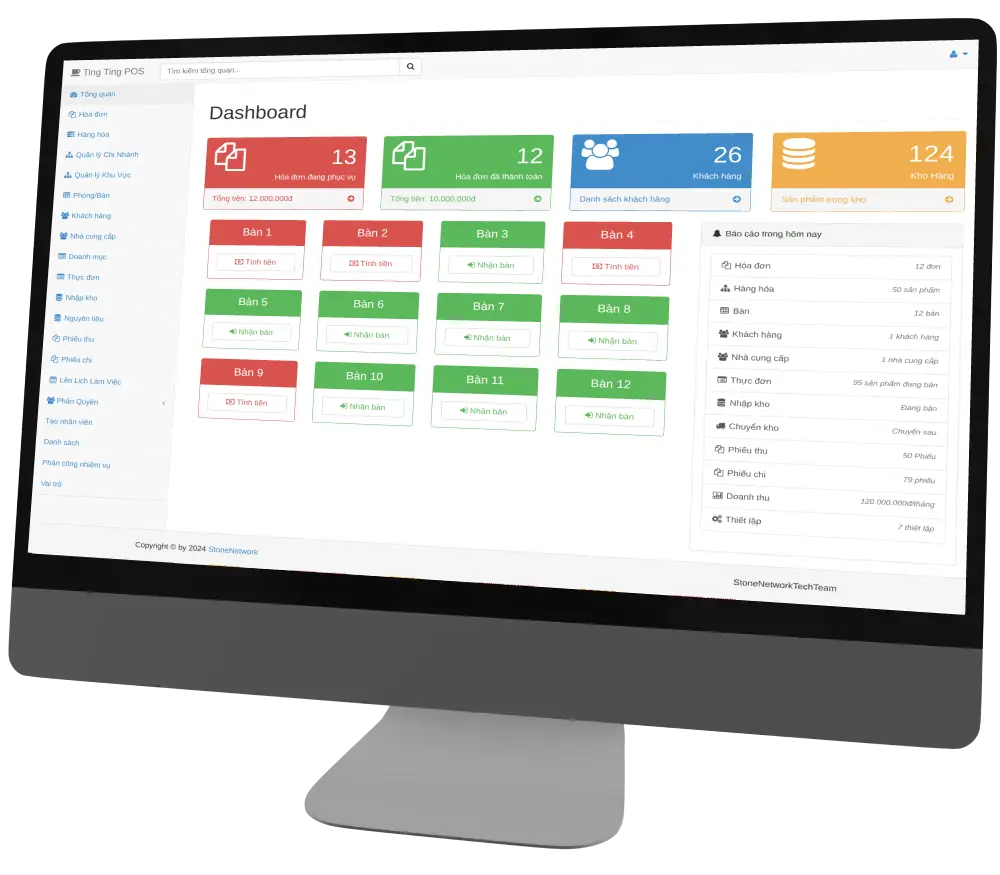
Top 10 thư viện AI
Python has grown in popularity over the years to become one of the most popular programming languages for machine learning (ML) and artificial intelligence (AI) tasks. It has replaced many of the existing languages in the industry, and it is more efficient when compared to these mainstream programming languages. On top of all of that, its English-like commands make it accessible to beginners and experts alike.
Another fundamental feature of Python that draws many of its users is its vast collection of open-source libraries. These libraries can be used by programmers of all experience levels for tasks involving ML and AI, data science, image and data manipulation, and much more.
Why Python for Machine Learning and AI?
Python’s open-source libraries are not the only feature that make it favorable for machine learning and AI tasks. Python is also highly versatile and flexible, meaning it can also be used alongside other programming languages when needed. Even further, it can operate on nearly all OS and platforms on the market.
Implementing deep neural networks and machine learning algorithms can be extremely time consuming, but Python offers many packages that cut down on this. It is also an object-oriented programming (OOP) language, which makes it extremely useful for efficient data use and categorization.
Another factor that makes Python favorable, especially to beginners, is its growing community of users. Since it is one of the fastest growing programming languages in the world, the number of Python developers and development services has exploded. The Python community is growing alongside the language, with active members always looking to use it to tackle new problems in business.
Now that you know why Python is one of the top programming languages, here are the 10 best python libraries for machine learning and AI:
1. NumPy
NumPy is widely regarded as the best Python library for machine learning and AI. It is an open-source numerical library that can be used to perform various mathematical operations on different matrices. NumPy is considered one of the most used scientific libraries, which is why many data scientists rely on it to analyze data.
NumPy arrays require far less storage area than other Python lists, and they are faster and more convenient to use. You can manipulate the data in the matrix, transpose it, and reshape it with NumPy. All in all, NumPy is a great option to increase the performance of machine learning models without too much complex work required.
Here are some of the main features of NumPy:
- High-performance N-dimensional array object.
- Shape manipulation.
- Data cleaning/manipulation.
- Statistical operations and linear algebra.
2. SciPy
SciPy is a free, open-source library that is based on NumPy. It is especially useful for large sets of data, being able to perform scientific and technical computing. SciPy also comes with embedded modules for array optimization and linear algebra, just like NumPy.
The programming language includes all of NumPy’s functions, but it turns them into user-friendly, scientific tools. It is often used for image manipulation and provides basic processing features for high-level, non-scientific mathematical functions.
SciPy is one of the foundational Python libraries thanks to its role in scientific analysis and engineering.
Here are some of the main features of SciPy:
- User-friendly.
- Data visualization and manipulation.
- Scientific and technical analysis.
- Computes large data sets.
3. Theano
A numerical computation Python library, Theano was developed specifically for machine learning. It enables optimization, definition, and evaluation of mathematical expressions and matrix calculations. This allows for the employment of dimensional arrays to construct deep learning models.
Theano is a highly specific library, and it is mostly used by machine learning and deep learning developers and programmers. It supports integration with NumPy and can be used with a graphics processing unit (GPU) insead of a central processing unit (CPU), which results in data-intensive computations 140 times faster.
Here are some of the main features of Theano:
- Built-in validation and unit testing tools.
- Fast and stable evaluations.
- Data-intensive calculations.
- High-performing mathematical computations.
4. Pandas
Another top Python library on the market is Pandas, which is often used for machine learning. It acts as a data analysis library that analyzes and manipulates data, and it enables developers to easily work with structured multidimensional data and time series concepts.
The Pandas library offers a fast and efficient way to manage and explore data by providing Series and DataFrames, which represent data efficiently while also manipulating it in different ways.
Here are some of the main features Pandas:
- Indexing of data.
- Data alignment
- Merging/joining of datasets.
- Data manipulation and analysis.
5. TensorFlow
Another free and open-source Python library, TensorFlow specializes in differentiable programming. The library consists of a collection of tools and resources that enables beginners and professionals to construct DL and ML models, as well as neural networks.
TensorFlow consists of an architecture and framework that are flexible, enabling it to run on various computational platforms like CPU and GPU. With that said, it performs best when operated on a tensor processing unit (TPU). The Python library is often used to implement reinforcement learning in ML and DL models, and you can directly visualize the machine learning models.
Here are some of the maine features of TensorFlow:
- Flexible architecture and framework.
- Runs on a variety of computational platforms.
- Abstraction capabilities
- Manages deep neural networks.
6. Keras
Keras is an open-source Python library aimed at the development and evaluation of neural networks within machine learning and deep learning models. It is capable of running on top of Theano and Tensorflow, which means it can train neural networks with little code.
The Keras library is often preferred due to it being modular, extensible, and flexible. This makes it a user-friendly option for beginners. It can also integrate with objectives, layers, optimizers, and activation functions. Keras operates in various environments and can run on CPUs and GPUs. It also offers one of the widest ranges for data types.
Here are some of the main features of Keras:
- Data pooling.
- Developing neural layers.
- Builds deep learning and machine learning models.
- Activation and cost functions.
7. PyTorch
One more option for an open-source machine learning Python library is PyTorch, which is based on Torch, a C programming language framework. PyTorch is a data science library that can be integrated with other Python libraries, such as NumPy. The library can create computational graphs that can be changed while the program is running. It is especially useful for ML and DL applications like natural language processing (NLP) and computer vision.
Some of the main selling points of PyTorch include its high speed of execution, which it can achieve even when handling heavy graphs. It is also a flexible library, capable of operating on simplified processors or CPUs and GPUs. PyTorch has powerful APIs that enable you to expand on the library, as well as a natural language toolkit.
Here are some of the main features of PyTorch:
- Statistical distribution and operations.
- Control over datasets.
- Development of DL models.
- Highly flexible.
8. Scikit-Learn
Originally a third-party extension to the SciPy library, Scikit-learn is now a standalone Python library on Github. It is utilized by big companies like Spotify, and there are many benefits to using it. For one, it is highly useful for classical machine learning algorithms, such as those for spam detection, image recognition, prediction-making, and customer segmentation.
Another one of the main selling points of Scikit-learn is that it is easily interoperable with other SciPy stack tools. Scikit-learn has a user-friendly and consistent interaction that makes it easy for you to share and use data.
Here are some of the main features of Scikit-learn:
- Data classification and modeling.
- End-to-end machine learning algorithms.
- Pre-processing of data.
- Model selection.
9. Matplotlib
Matplotlib is a unity of NumPy and SciPy, and it was designed to replace the need to use proprietary MATLAB statistical language. The comprehensive, free and open-source library is used to create static, animated, and interactive visualizations in Python.
The Python library helps you understand the data before moving it to data processing and training for machine learning tasks. It relies on Python GUI toolkits to produce plots and graphs with object-oriented APIs. It also provides an interface similar to MATLAB so a user can carry out similar tasks as MATLAB.
Here are some of the main features of Matplotlib:
- Create publication quality plots.
- Customize visual style and layout.
- Export to various file formats.
- Interactive figures that can zoom, pan, and update.
10. Plotly
Closing out our list of 10 best Python libraries for machine learning and AI is Plotly, which is another free and open-source visualization library. It is highly popular among developers thanks to its high-quality, immersive, and publication-ready charts. Some of the charts that are accessible through Plotly include boxplots, heatmaps, and bubble charts.
Plotly is one of the best data visualization tools on the market, and it is built on top of the D3.js, HTML, and CSS visualization toolkit. Written in Python, it uses the Django framework and can help create interactive graphs. It works on different data analytics and visualization tools and enables you to easily import data into a chart. You can also use Plotly to create slide decks and dashboards.
Here are some of the main features of Plotly:
- Charts and dashboards.
- Snapshot engine.
- Big data for Python.
- Easily import data into charts.
05 Bình luận

Lý thuyết về các lớp phân tầng và sự hình thành các vì sao sẽ giúp chúng ta hiểu rõ hơn về vũ trụ.
Anh Jmi
Ngày 4 tháng 12, 2017 vào lúc 3:12 chiều

Đây là một trong những kiến thức quan trọng giúp chúng ta hiểu về sự hình thành vũ trụ.
Emilly
Ngày 4 tháng 12, 2017 vào lúc 3:12 chiều





Biển đêm bốn mùa hạt giống trời được nuôi dưỡng. Cảm ơn các bạn đã chia sẻ.
Binh Lam
Ngày 4 tháng 12, 2017 vào lúc 3:12 chiều